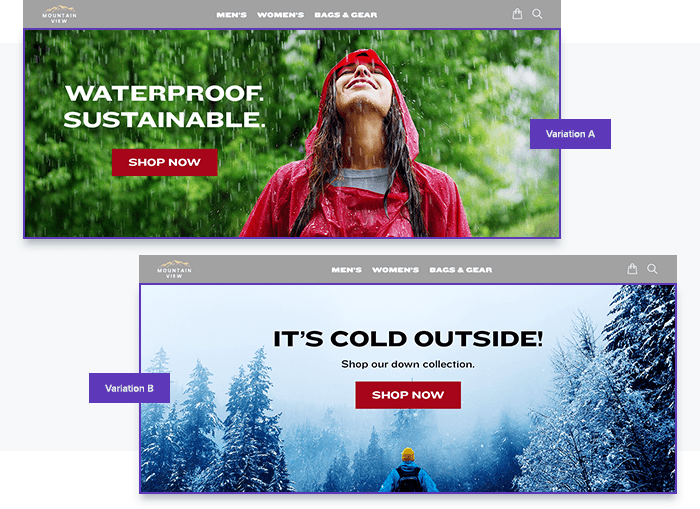How to Localise Your International Ecommerce Stores: Insights From Dynamic Yield
We catch up with Shana Pilewski, Head of Marketing at experience optimisation platform Dynamic Yield, to find out why ecommerce localisation is so important for international brands in their quest to provide a relevant and engaging customer experience for shoppers across the globe.
Written By
Catherine Lambert

As ecommerce continues to boom, merchants of all sizes are starting to look beyond their borders and consider internationalising their brands. The opportunity to reach millions of new customers around the globe through your ecommerce store transforms far flung regions into potentially lucrative markets.
But how do you achieve international growth without compromising on quality? To expand at the cost of your customer experience is to fall at the first hurdle. If you want to succeed in new markets, you’ll need to be able to demonstrate to your customers that you’re a brand they can relate to.
Ecommerce localisation
In short, you need to localise your brand. Localisation is more than simply translating your site into the local language. It takes into account the cultural context of your customers, and enables them to interact naturally with your store.
The aim of localisation is to make every customer feel valued. Customers don’t wish to be thought of as a statistic within your global campaign. They need to believe that the products they’re buying were designed with them in mind. They want to feel understood and appreciated by the brands they buy from.
And they expect the same service and connection that they’d get with a local retailer.
Q&A with Shana Pilewski at Dynamic Yield
Experience optimisation platform Dynamic Yield has years of experience helping international brands connect with their customers on a personal level. Today, Dynamic Yield reaches more than 600 million users a month, delivering individualised experiences across hundreds of global brands.
We caught up with Shana Pilewski, Head of Marketing at Dynamic Yield, to learn more about how localising the on-site experience can help merchants become relevant and connected to every customer, no matter where they are.
First off, why is site personalisation so important for international brands?
Imagine a consumer from Germany lands on an ecommerce site’s homepage, only to find products catered toward the average visitor, which is heavily made up of shoppers based in the UK. It’s safe to say that not only would the styles and trends in these areas vastly differ, but also that the needs and preferences of each individual shopper would range widely from location to location.
How does Dynamic Yield help merchants achieve their internationalisation goals?
To better serve customers in a global marketplace, brands should consider incorporating geo-targeting into their merchandising strategy. With Dynamic Yield, visitors can be targeted according to continent, country, and even city, allowing merchants to take both a macro or micro approach depending on the size and value of each location-based segment.
What are some of the benefits of localisation for the merchant?
By serving contextualised, location-specific content, products, recommendations, messages and offers, teams can demonstrate a clear understanding of who their visitors are, where they are coming from, and what they are looking for – the benefits of which include higher engagement and conversion rates.
In what ways can a brand create a more localised ecommerce experience for their customers?
A great example of a well-orchestrated geo-targeting campaign is one in which a visitor’s local weather conditions are used to personalise the site experience. After all, weather has a profound influence in shaping consumer behaviour. In the northern hemisphere, summer may be in session, whereas folks in the southern half of the world could be experiencing colder days.
This information is especially critical for retail brands with large seasonal product catalogs, as promoting the right products to the right users throughout the year is a surefire method of gaining a competitive advantage and increasing the average revenue per user (ARPU).
Retailers can segment users according to geo-location and run multi-channel campaigns according, for example, to local weather conditions. If it’s cold outside in a user’s location, the brand can direct them to a landing page or banner promoting cold-weather gear, apparel, and accessories.
Or, brands can create and run weather-specific campaigns that dynamically adapt messaging to fit certain conditions (e.g. if it’s rainy, if temperatures drop below 55°F etc.), serving personalised content or product recommendations based on the local weather.
Do you have any examples of weather-based localisation in action?
A good illustration of this is our work with a leading Swedish outdoor equipment retailer, who set up multiple MP4 hero banners for every type of weather condition in order to optimise product discovery. Then, with multiple variations per weather condition, machine learning was used to guarantee the best variation was served to each individual visitor all year round.
When compared against the control, the weather-based banners generated a 79% uplift in ARPU!

How else can brands give their customers a more localised experience?
Retailers could notify visitors that items can be purchased and shipped directly to a visitor’s location, specified dynamically.
And when it comes to offline, brick-and-mortar retailers can target nearby shoppers who have their mobile devices’ location services turned on with relevant or targeted promotions in order to draw them into the store.
What has Dynamic Yield’s experience been in helping international merchants reach their target markets?
Localisation is critical for international websites. Each country and region’s user behaviour is different and that should be considered when making marketing and merchandising decisions to ensure the experience is tailored to that audience.
We’ve seen attempts to show the same content globally, but when analysing results per region, there’s often a different story, one in which experiences are compromised for these other visitors.
What advice around localisation would you give to merchants thinking about internationalising their brand?
It may be challenging to decide where to start and how to allocate resources for localisation, but it’s okay to start with the “best guess” according to available information on each region. This means smaller efforts in the initial phase, launching campaigns for several countries with the expectation to learn from the results.
Then, teams can dive deeper, using the performance data and audience analysis to influence the decision-making process moving forwards.
These learnings can inform what the behaviours are in different regions, allowing for the creation of new hypotheses, iterations, and optimisations for greater personalisation over time.
For the best possible results, select the largest opportunities, experiment, and test those insights in other markets.
Thank you to Shana for sharing such useful insights around personalisation for international brands. We hope you’ll find these tips and examples useful when it comes to localising your own ecommerce stores!
Your Shopify Plus agency for internationalisation
Here at Swanky, we know what it takes to go global. Our certified Shopify Plus experts can show you how to take your first steps cross-border, or optimise your existing international ecommerce stores for accelerated growth.
To find out more about how to scale your brand internationally, and how Swanky could help, check out our new internationalisation hub!

